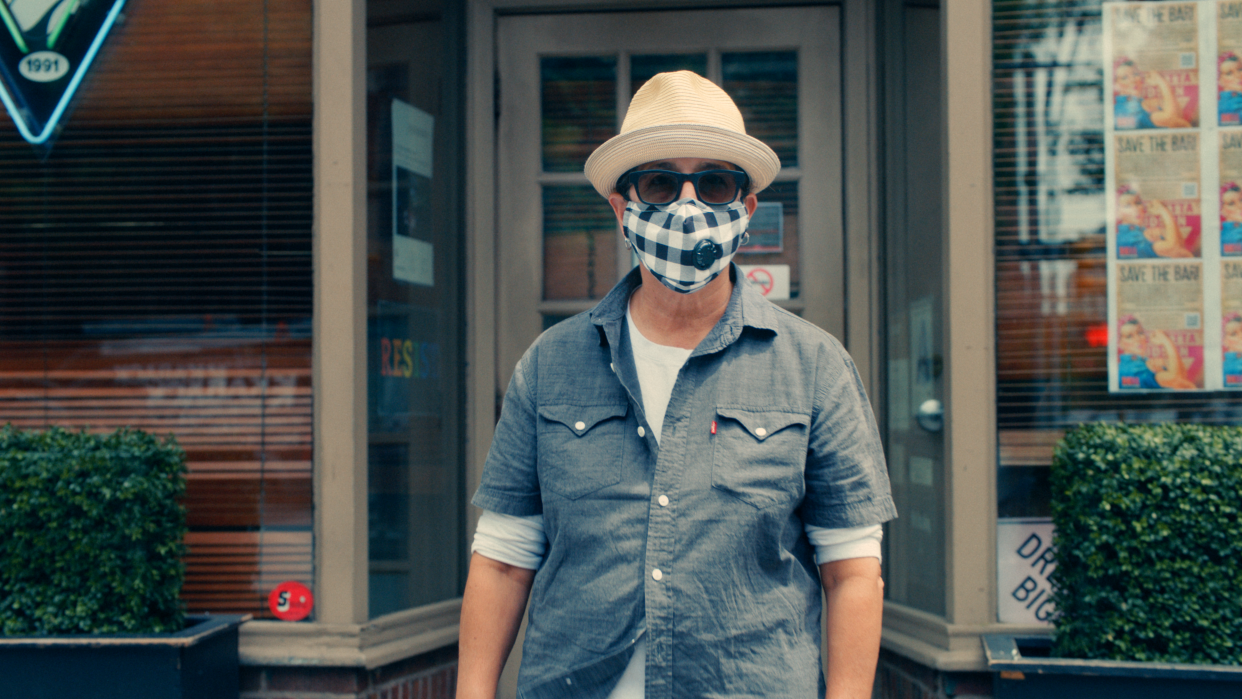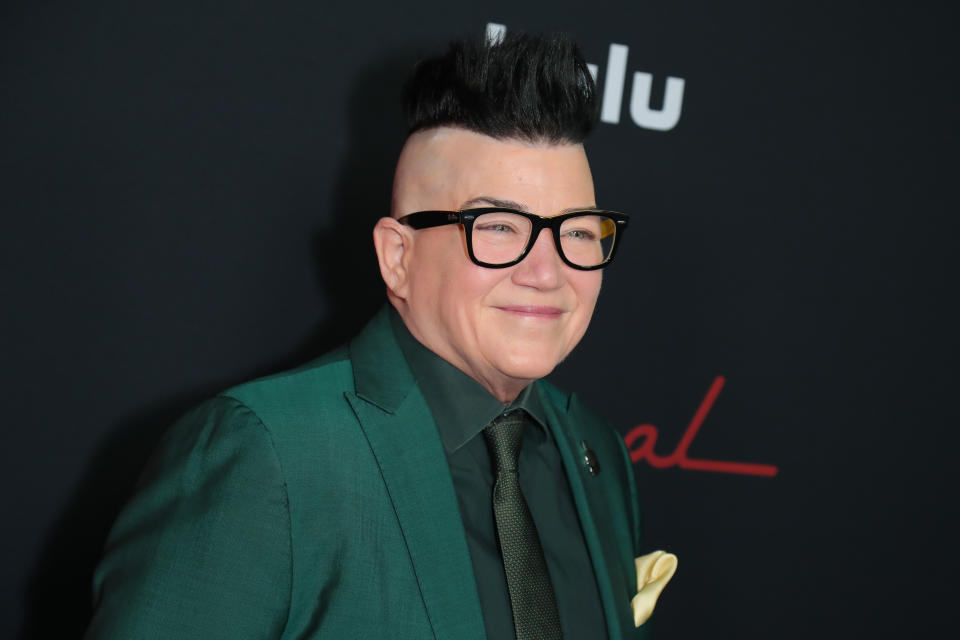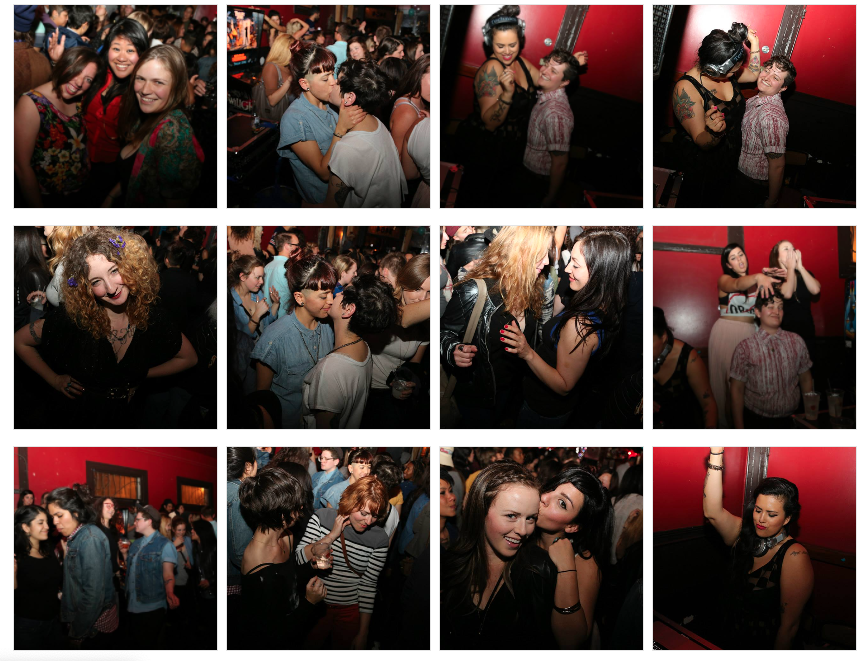There are only 15 lesbian bars left in the entire country. This campaign is trying to save them.

The United States is home to around 60,000 bars. But according to a new awareness and fundraising campaign called the Lesbian Bar Project, only 15 of them — about .025 percent — are sapphic-centric.
“It’s an issue,” Lea DeLaria, executive producer and narrator of the project’s PSA (watch below) and the jazz singer and actress best known for her turn as Big Boo on Orange Is the New Black, tells Yahoo Life.
“This is where I found my community, this is where I came out, this is how I found other lesbians,” DeLaria, who got her start as a pioneering, no-holds-barred lesbian comedian (the first-ever on TV, in 1993), explains. “And I know the world has changed, and I know that we can do things differently now — I know I can go online and that there’s a [lesbian dating] app called Lex, all this kind of stuff — but it’s not the same… So, the fact that we keep losing them is frightening for me, that there won’t be a place for dykes to just go be with other dykes. It’s near and dear to my heart… I don’t want to see our places disappear. And they’re vastly disappearing.”
In a recent New York Times story about how fictional lesbian bars are thriving on TV, Greggor Mattson, an associate professor of sociology at Oberlin College who tracks the closure of gay bars through the Damron travel guide for LGBTQ spaces, reported that lesbian bar listings in the U.S. were at 15 in 2019, down from 31 in 2007. (Gay men’s bars dropped to 387 from 699 in that same period.) In 1987, the guide had listed 206 lesbian bars.
Those familiar with the culture have many theories on the decrease — including less need due to the assimilation of LGBTQ culture into the mainstream, the financial inequality of women (now made worse by the pandemic), a shift to online dating culture, the tendency for older lesbians to settle down and stay home and a fundamental change in how young women personally identify, such as queer, non-binary or trans, which can make the idea of a lesbian bar feel unwelcoming or even irrelevant.

“The younger girls are meeting each other in other places, so they’re not supporting the bars as much as they used to,” says DeLaria, “and the older dykes are moving to the country and raising alpacas.”
The 15 (give or take) that remain, according to the Lesbian Bar Project — a campaign sponsored by Jägermeister’s #SaveTheNight, a virtual nightlife effort — exist in cities including Atlanta (My Sister’s Room), Houston (Pearl Bar), Dallas (Sue Ellen’s), Philadelphia (Toasted Walnut), Seattle (Wildrose), Milwaukee (Walker’s Pint), Denver (Blush & Blue), New York (Cubbyhole and Henrietta Hudson).
“Now they’re only in urban centers,” DeLaria says, making another important point about access, “whereas, when I grew up in a suburb of St. Louis, Belleville, Illinois, there was a dyke bar.”
Mobile, Ala., is home to the newest bar on the Project’s list: Herz. It was opened, against the odds, in October 2019, and soon it was facing not only the challenges that all lesbian bars have come up against but those of COVID-19, as well.

“My wife and I traveled the coast from Louisiana through Florida for years just looking for a place where we can be ourselves. We found several ‘gay’ establishments but it’s rare to find a gay bar that is geared equally for males and females,” Rachel Broughton, co-owner of Herz, tells Yahoo Life. “It’s been a real struggle but thankfully, we’re still here… The mandatory closures and hurricanes have been horrible for us financially, but the love and support that we receive from our community has been amazing. Since opening, we’ve discovered how necessary it is to have a safe place for lesbians to connect and feel loved.”
“Queer spaces, and particularly lesbian spaces, have been important and necessary as a way to socialize with like-minded community in a safe space, free from judgment, ridicule and worse,” Wanda Acosta, a former longtime bar owner and nightlife promoter in NYC — whose Sundays at Café Tabac party was known as ground zero for the popular “lesbian chic” of the 1990s — tells Yahoo Life.
“These spaces are where we can let our hair down and feel free, meet friends, lovers, long-term partners, collaborate and feel part of a community that accepts you and understands you.” Acosta, now a hotelier and producer of the Sundays at Café Tabac podcast, adds, “As queer women, it is also important to be able to socialize without the male gaze, and the patriarchal and hetero rituals that exist in bars otherwise.”
Lesbian historian Lillian Faderman, author of books including Odd Girls and Twilight Lovers: A History of Lesbian Life in Twentieth-Century America, tells Yahoo Life that, historically, “lesbian bars used to be the only game in town. I came out in the 1950s and I came out into a working-class bar culture and there was no other way I could meet a woman. How would you do it?”
Faderman recalls a time when there were several lesbian bars in one city — Los Angeles, in her case — and understands “the sentimentality and romanticizing of bars,” she says. “Women have told me what they really miss about lesbian culture is the idea that you could be an outlaw. And, of course, bars were exciting, because you knew you were doing something that the rest of society frowned on. That outlaw-ness, for a lot of women, has disappeared. But of course, the notion of lesbianism has largely disappeared, as well. It’s hard to find a lot of young women who identify as lesbian [rather than] queer or non-binary.”
The Gateways Club, London, United Kingdom, c. 1953. Photo @time. #lgbthistory #HavePrideInHistory
A post shared by lgbt_history (@lgbt_history) on
As a historian, Faderman says, she realizes that “everything is in constant flux,” adding, “I’m happy [these places] existed when they existed, but things change… It doesn’t matter if it’s sad to me. It matters if it’s sad to young lesbians, and I assume it’s not, because people vote with their feet.”
But DeLaria, for one, disagrees with that assessment.
“I don’t think that’s true at all,” she says, noting that before Lexington Club, the last lesbian bar in San Francisco, closed in 2014, it “was packed every night,” but that its rent skyrocketed, prompting owner Lila Thirkield to close and note in a Facebook post, “Eighteen years ago I opened The Lex to create a space for the dykes, queers, artists, musicians and neighborhood folks who made up the community that surrounded it. Eighteen years later, I find myself struggling to run a neighborhood dyke bar in a neighborhood that has dramatically changed. A few years back my rent was raised to market rate, and though it was difficult, we seemed to weather it at first. But as the neighborhood continued to change, we began to see sales decline, and they continued to do so.”

Also skeptical of Faderman’s take is Lisa Cannistraci, whose 29-year-old Henrietta Hudson, in NYC, is featured (along with Cannistraci’s masked face) in the Lesbian Bar Project’s PSA. “I disagree, and I think the community I know disagrees,” she tells Yahoo Life. “There’s something about being in a room that you know you can walk into, by yourself, and engage with people and have an experience, even if it’s just a conversation.”
She adds, “I can’t speak to why other bars are closing. I can only tell you why I’m still open,” and recounts the various times she’s reassessed and changed things up over the years — bringing in international DJs, hosting a vast array of groups and nonprofits, and, in 2015, rebranding the space: “We’re not identified as a ‘lesbian bar’ anymore,” she says, but a “lesbian-centric queer human bar,” in which she saw, soon thereafter, young nonbinary visitors chatting with older lesbians at the bar, learning from each other. “They were talking for hours, the older and younger ones,” she says. “It’s been a beautiful journey.”
Her busiest year ever, Cannistraci adds, was 2019, which gives her hope about her post-COVID-closure reopening plans for the spring when she’ll bring in an outside food vendor and add a large sidewalk café out front. Because such lesbian-centric spaces, she’s convinced, “Are still important — and more than ever.”
Related video: How discrimination affects LGBTQ heart health
Read more from Yahoo Life:
Want lifestyle and wellness news delivered to your inbox? Sign up here for Yahoo Life’s newsletter.


